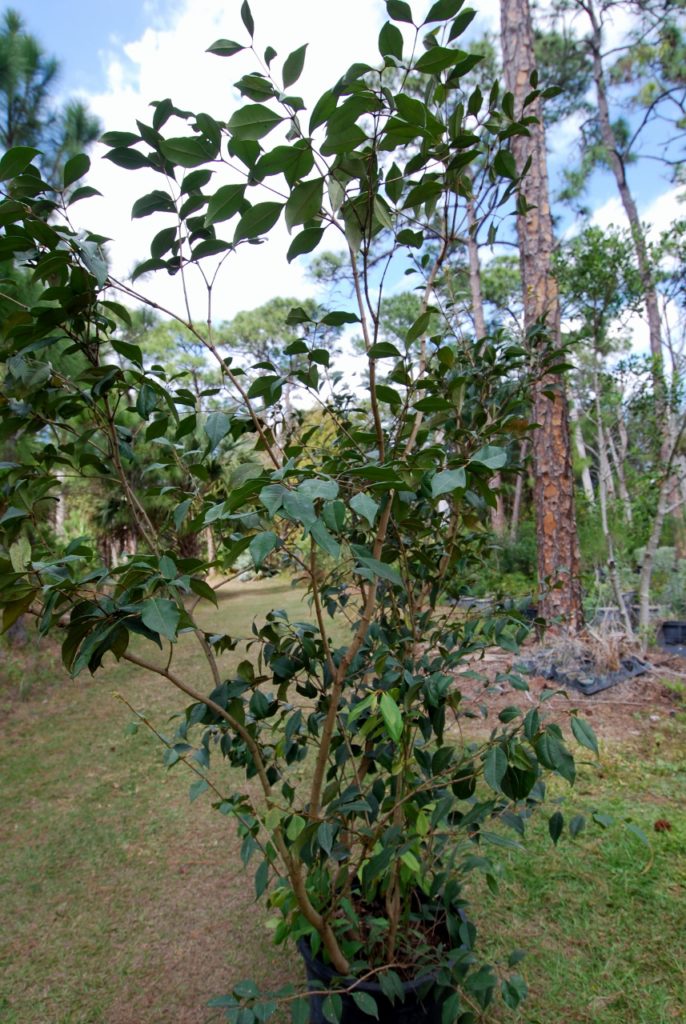
Spicewood
Calyptranthes pallens
Spicewood, or Pale Lidflower, is native to the Miami Rock Ridge sporadically from The Miami River to the lower Florida Keys. It is absent from the middle Keys. Spicewood grows in well drained, moist, rich soil and tolerates drought.
It can be planted near the coast in areas well back of the dune where only limited amounts of salt air can reach it.
This is not a good hedge plant due to the wispy, open growth of its branches. It does make an excellent small tree with a rounded form. The flowers are fragrant and white and attract honeybees.
The edible pea sized berries are the source of color for this tree. They occur in clusters that change from green to orange, red, yellow, and finally black. When the last four occur together, the effect is delightful.
The pointed leaves have tiny rusty colored hairs on them when young and the bark is brown with gray mottling. This is a great source of berries for birds in late summer.
Since this should be used as a tree, try mixing Spicewood with Gumbo Limbo, Pigeon Plum, the Stoppers, Myrtle of the River, Paradise Tree, Crabwood, West Indian Cherry, Wild Tamarind, Fiddlewood, Lancewood and other hammock trees.
The understory can be any mix of coastal species and wildflowers. The main pest is Lobate Lac Scale. This small hard scale is dark brown and covers small branches. It sucks the sap from the stems. The sugar syrup that it releases after straining out the proteins drops to the leaves below. This sugar syrup then turns black as mold grows on it.
I use organic insecticides labeled for scale insects to control this pest which was accidentally imported from India along with plant material.